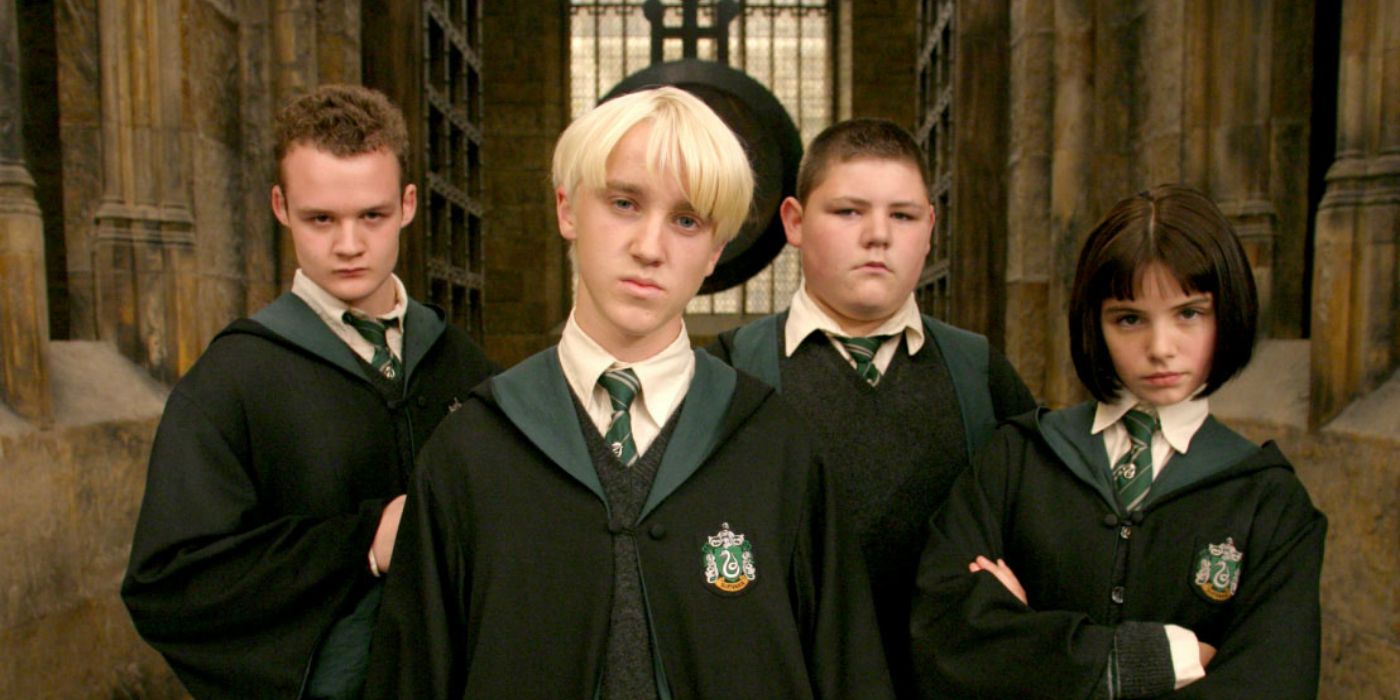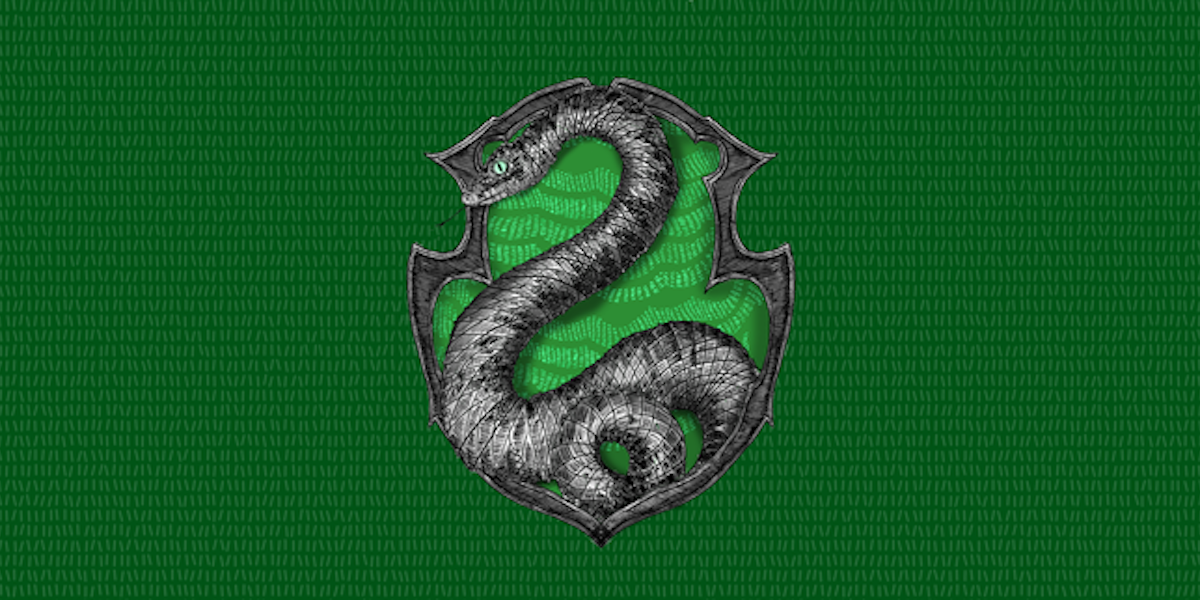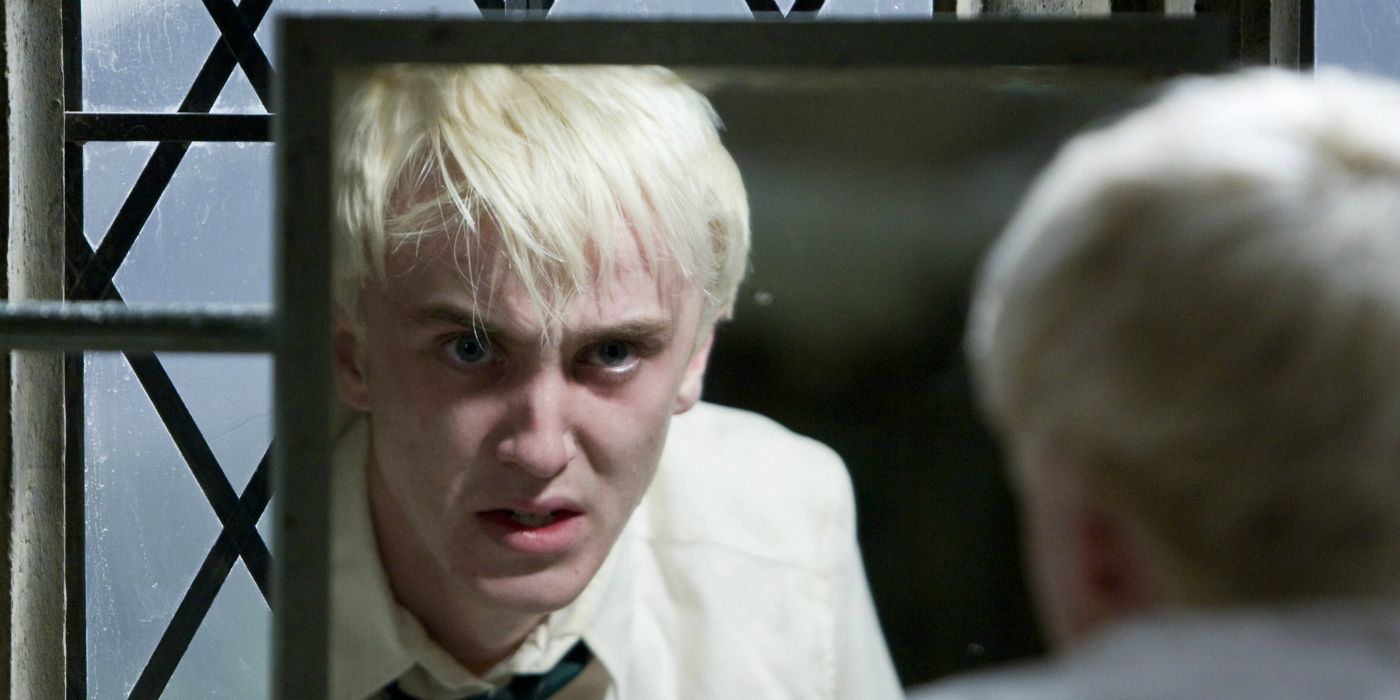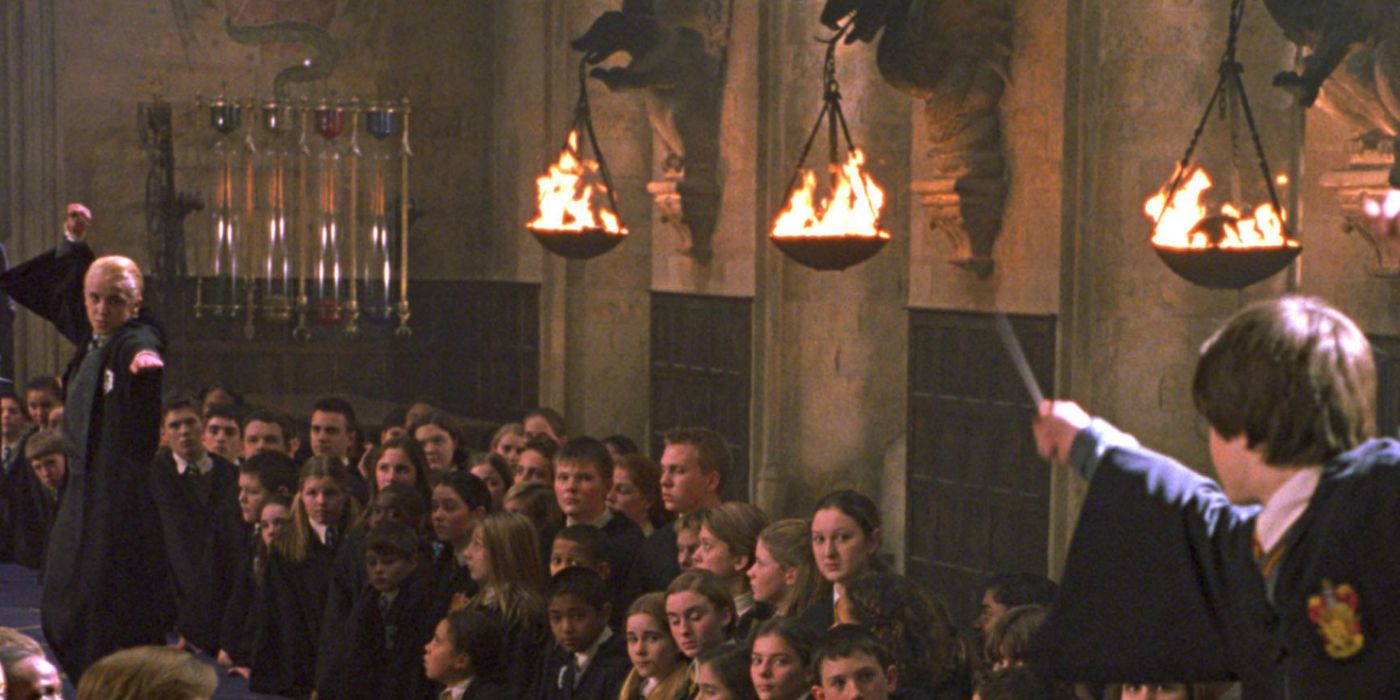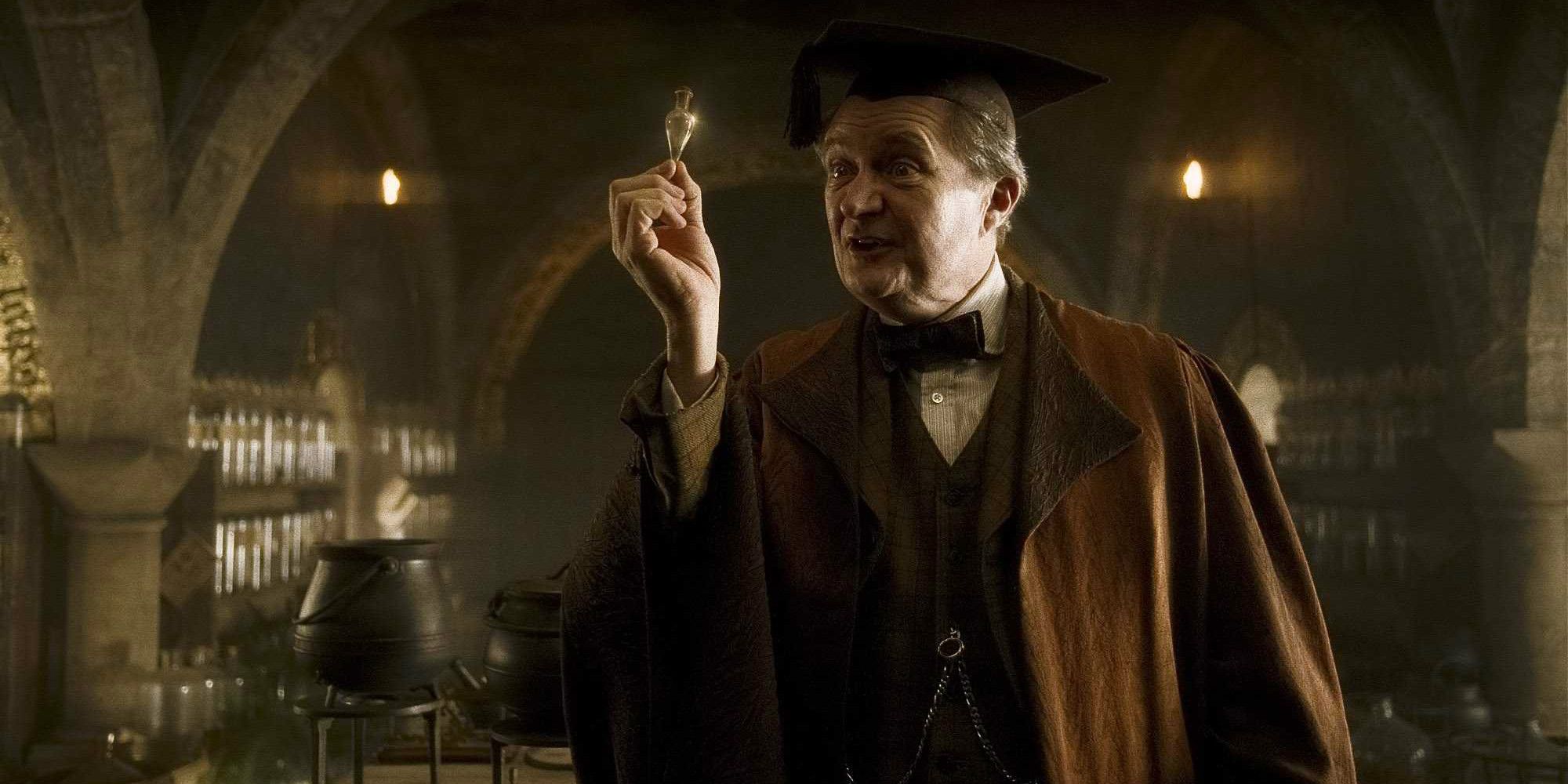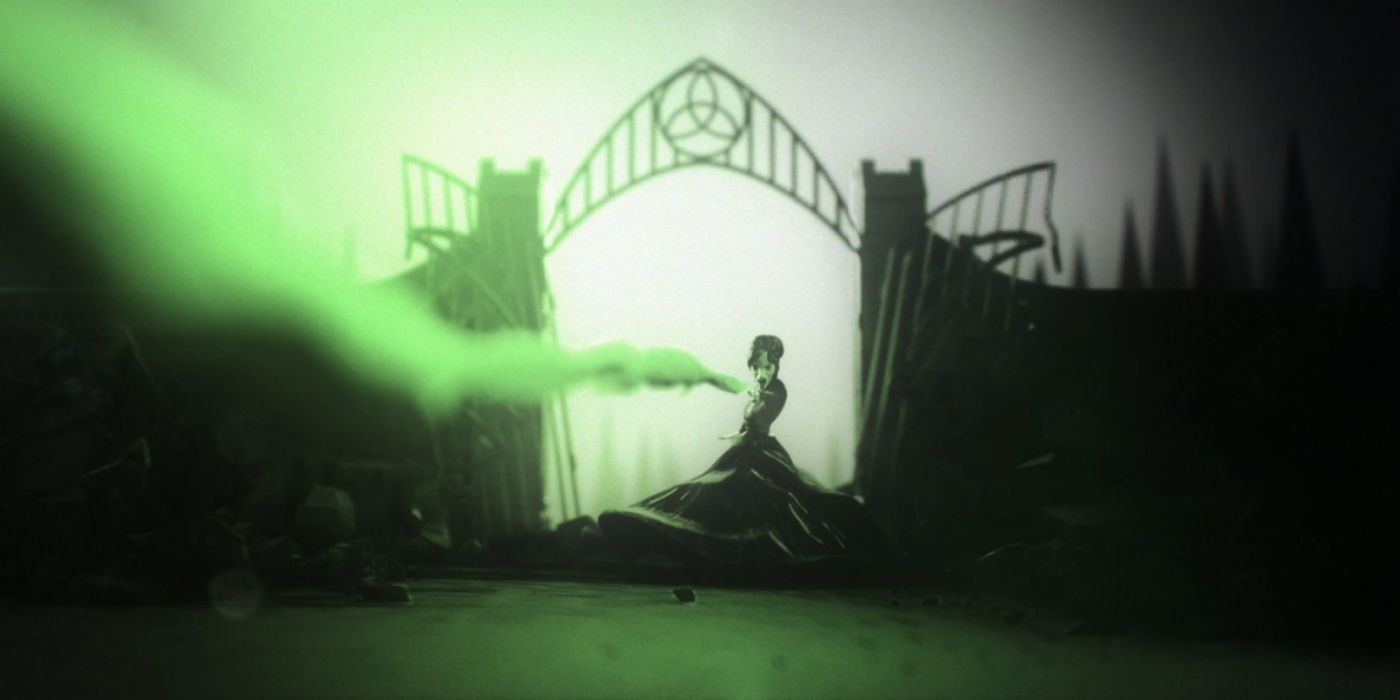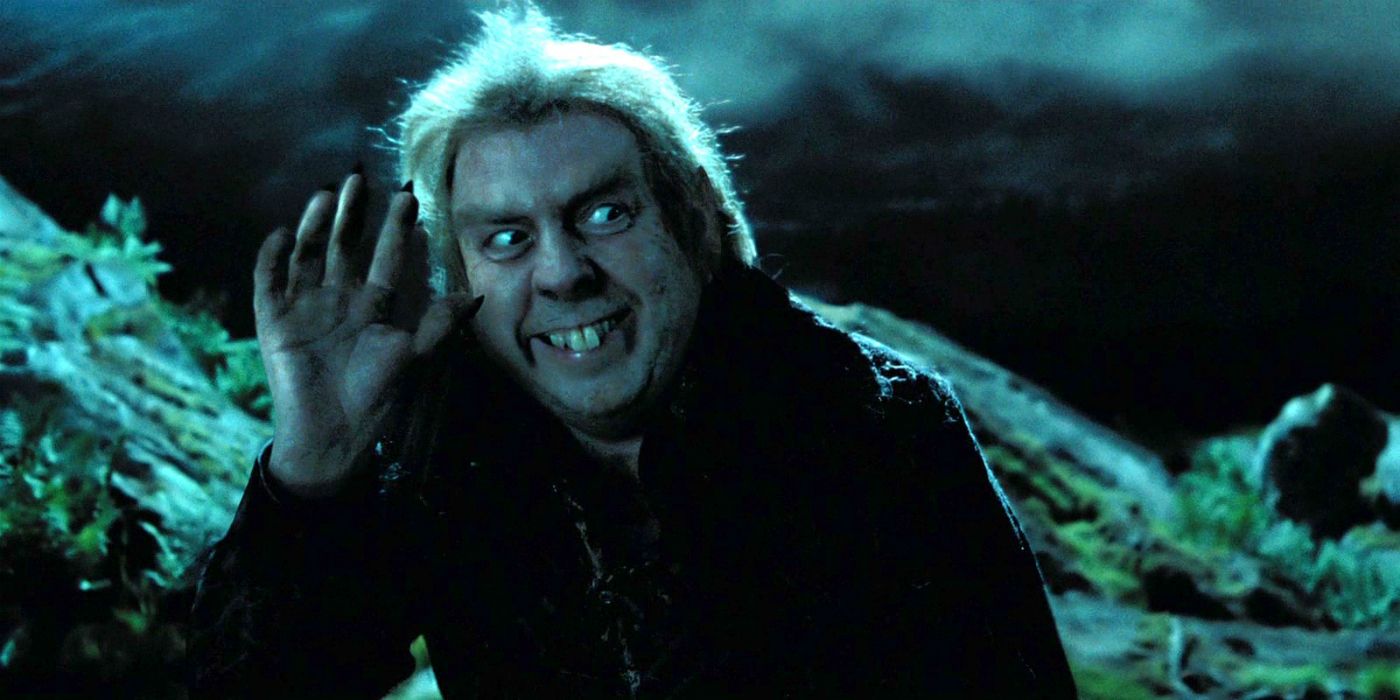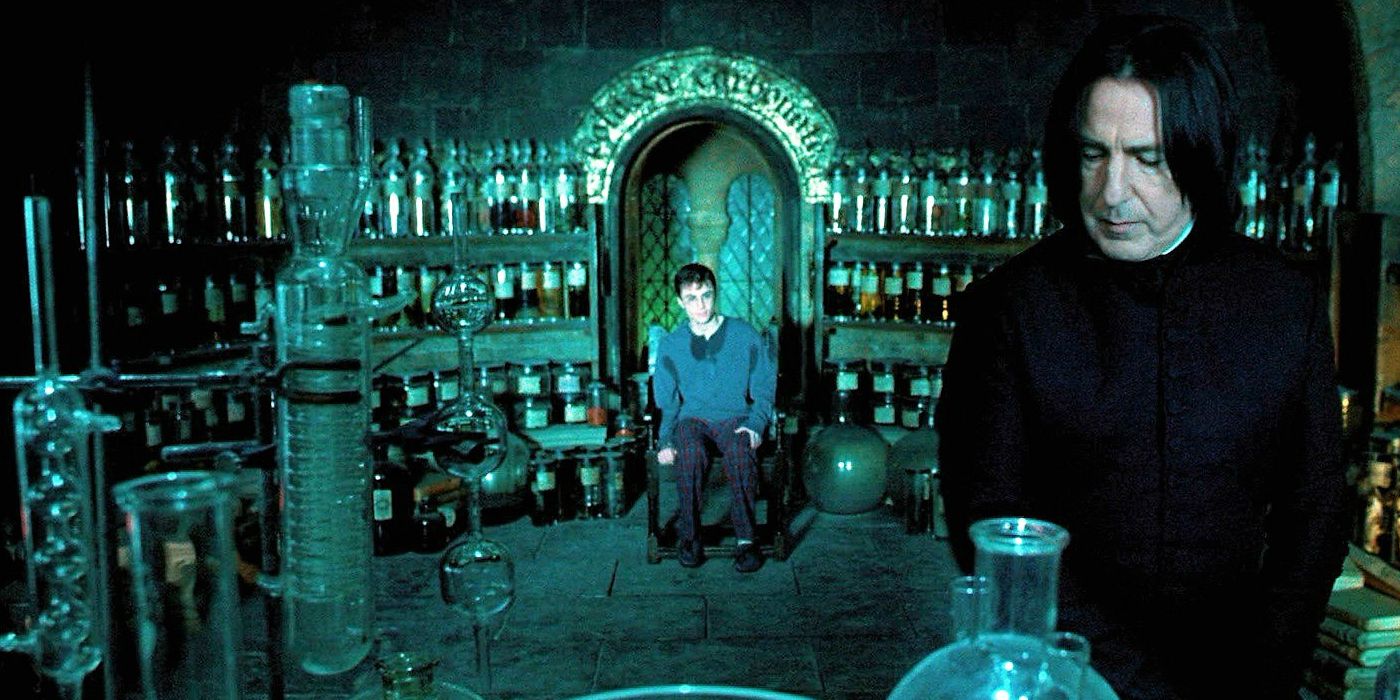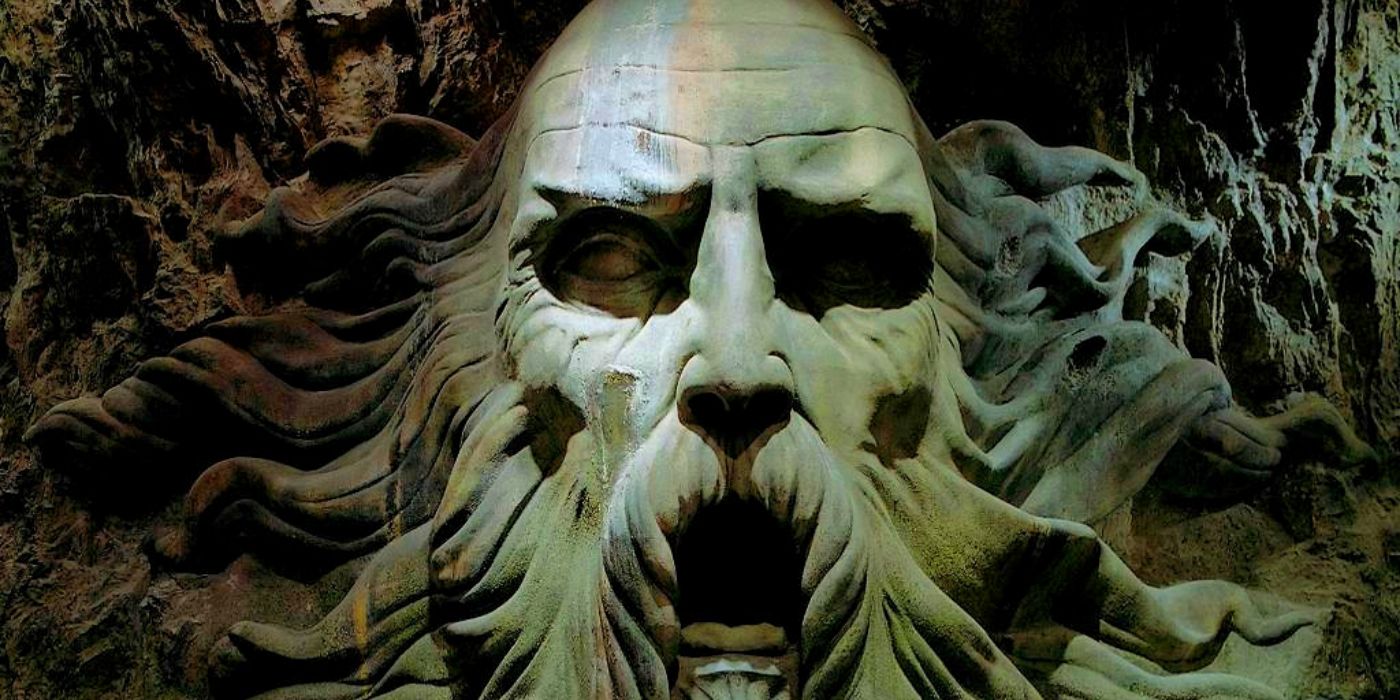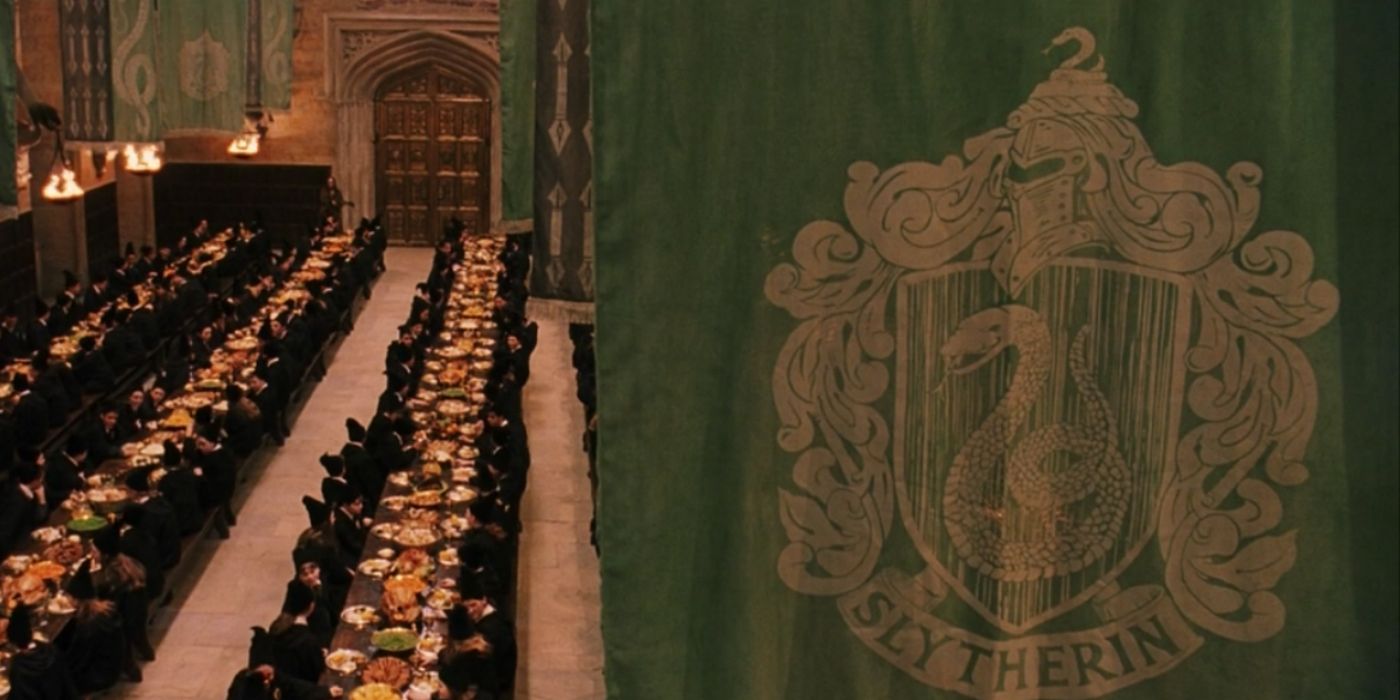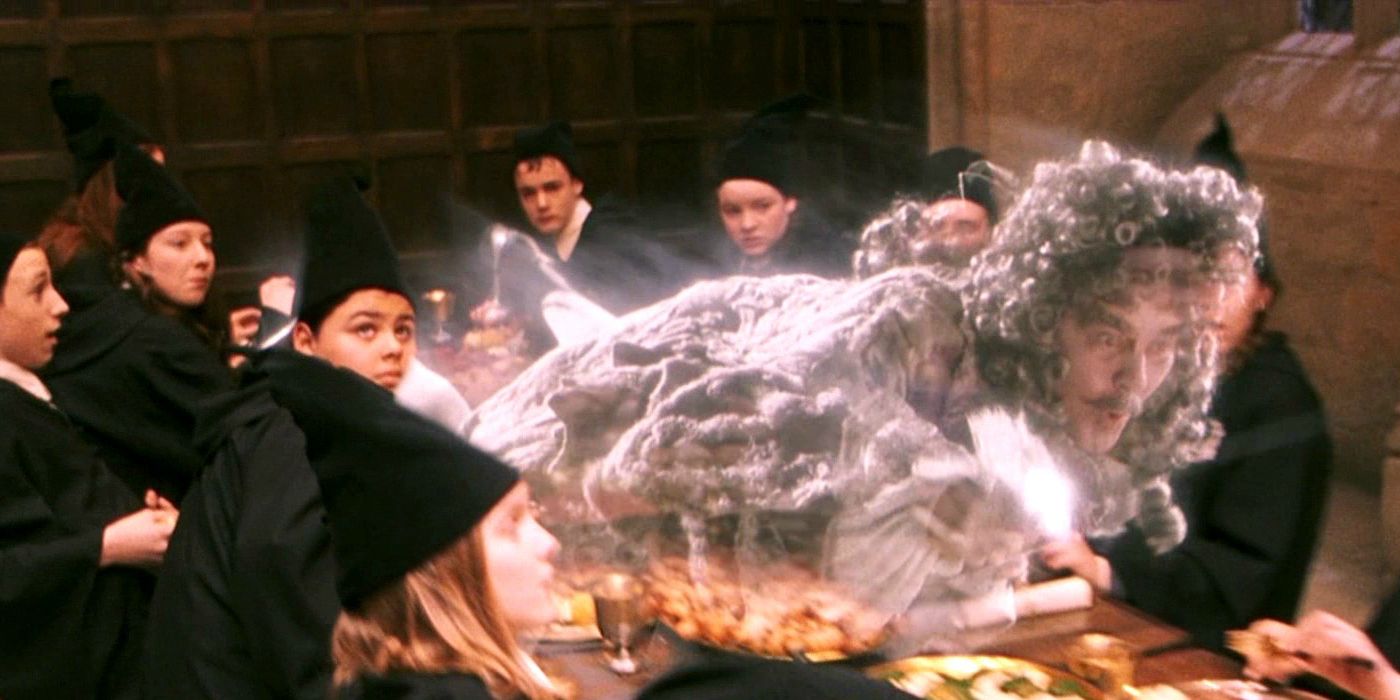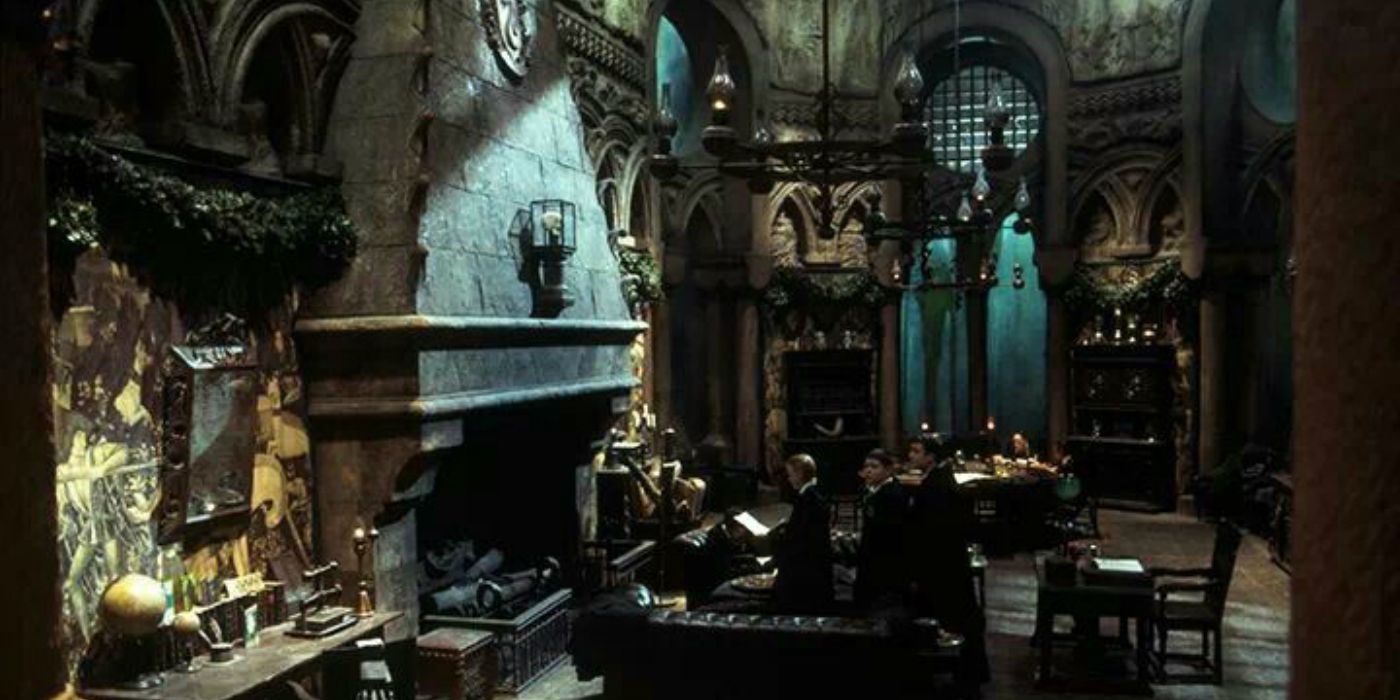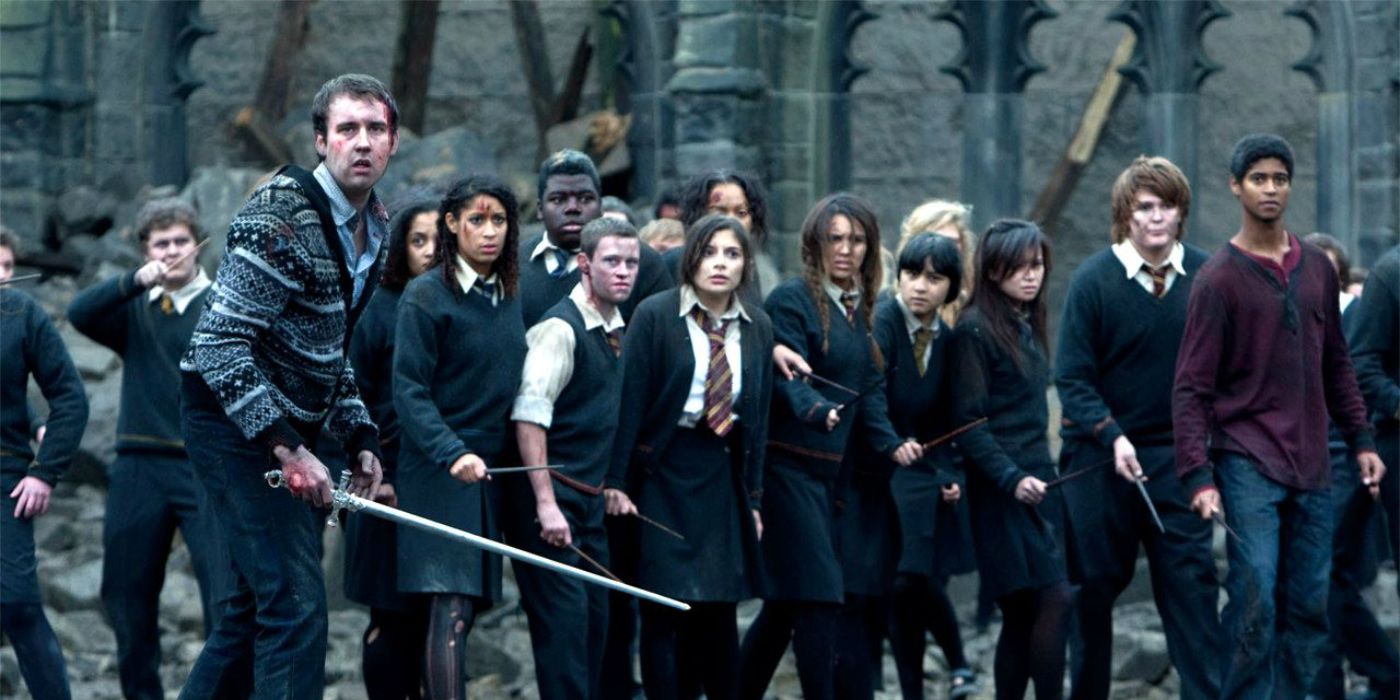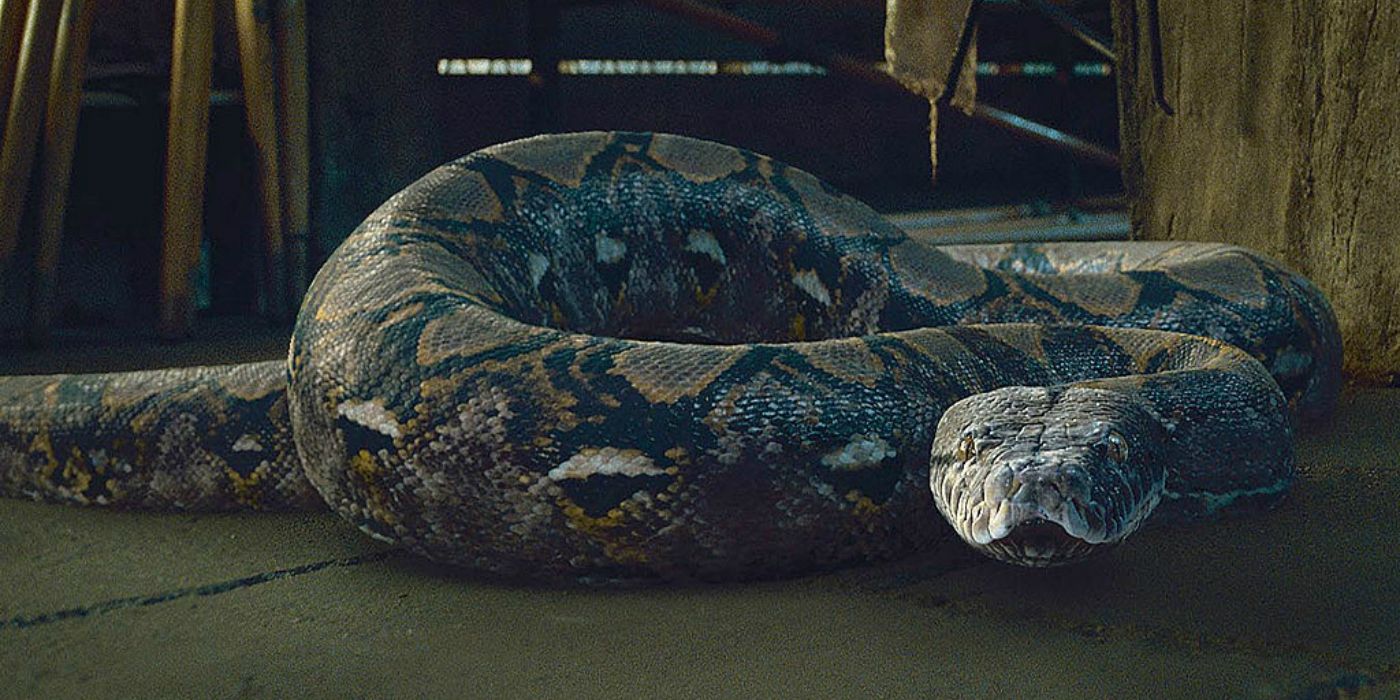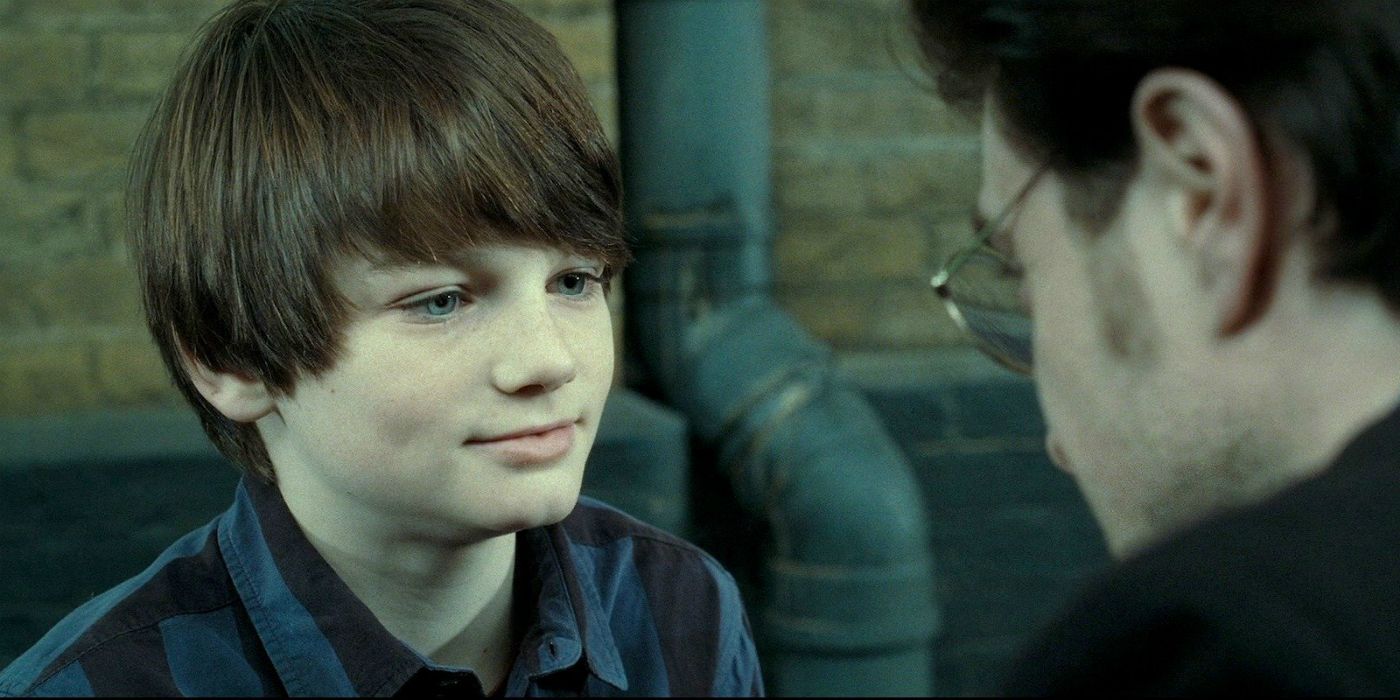If you’re only a casual fan of Harry Potter, chances are you’ve made some pretty basic observations about the world that J.K. Rowling created almost 20 years ago. Like, it was kind of weird that they randomly switched from wearing uniforms to street clothes halfway through their time at Hogwarts, or it’s kind of convenient that Voldemort and his cronies always manage to attack Harry at the end of a school year.
Maybe you’ve also decided that Slytherin, Hogwarts’ home to Malfoy, Tom Riddle, and numerous other villainous characters, is totally evil. Hey, it’s not hard to draw that conclusion. After all, nearly every bad character that Harry Potter encountered wore the house's signature green and silver at one point or another. Still, there’s a lot more to the Slytherin house than meets the eye. It’s been home to some truly amazing wizards, and has a rich and storied history that rivals even those of our favorite Harry Potter heroes. Here are 15 Things You Didn’t Know About Slytherin.
15. Their prevailing trait isn’t actually evil
Sure, if your house is responsible for helping to mold the most evil Wizarding mind of all time, you’re going to get a bad reputation. Despite having to claim Tom Riddle, a.k.a. Voldemort, as a notable alum, Slytherin isn’t automatically the house for “bad” or “evil” wizards. In fact, when it was founded by Salazar Slytherin, it was done so with the hope of training and educating the most resourceful, cunning, and ambitious witches and wizards at Hogwarts. Yes, these traits can be dangerous in the wrong hands, but they’re not inherently awful.
In some ways, the house that was home to Lucius Malfoy, Dolores Umbridge, and You-Know-Who didn’t get a fair shake from J.K. Rowling in the Harry Potter series, because we, the readers, saw it through the protagonists' admittedly biased eyes. After all, both Draco Malfoy and his Head of House, Severus Snape, ended up being far more, well, complicated characters than downright villains by the story’s end. That fact alone should serve as a concrete reminder that you can’t judge a Hogwarts House by the megalomaniac serial killer it spawned.
14. The Slytherin v. Gryffindor battle goes way, way back
The rivalry, or should we say never-ending feud, between Slytherin and Gryffindor is a constant thread that runs through both the Harry Potter books and the film franchise. From wand duels to Quidditch matches, the two houses are seemingly always engaged in a not-so-friendly competition. The discord between the serpents and the lions isn’t just about who can win the House Cup at Hogwarts each year, though.
It originated from a fundamental disagreement about the purpose of the school that happened between two of the school's founders. Godric Gryffindor believed that Hogwarts should open its doors to any young witch or wizard who wanted to learn. Salazar Slytherin, on the other hand, was vehemently against taking in students who weren’t pure-blood – that is, who didn’t come from a full lineage of magical folk. Their friendship eroded, and Professor Slytherin eventually left the school in disgust because the other founders sided with his new foe. The rest, from schoolyard squabbles to the rise of the Dark Lord and everything in between, is, as they say, history.
13. Blood purity isn’t everything with Slytherin, though
Fans of Harry Potter know that, as a general rule, an obsession with pure-blood wizardry and Slytherin go together like wands and wood. Throughout the series, numerous Slytherins proclaimed their distaste for Muggles or half-blood wizards. The students called them “mudbloods” and try to get them thrown out of the school. The adult alums had a tendency to become Death Eaters and work actively toward registering, torturing and sometimes killing non-pure bloods. In other words, they come by the reputation honestly. Still, a few notable Slytherins fought actively against their housemates’ pure blood biases.
There was Nymphadora Tonks’ mother, Andromeda, who married a Muggle to the horror of her family and former housemates. Harry’s sixth year potions instructor, Professor Slughorn, was vehement in his disdain for the blood purists amongst him and stood up against Voldemort and the Death Eaters when push came to shove. Plus, for all their complaints about wizards with muddled family trees, there were a lot of famous half-blood Slytherins: Dolores Umbridge, Severus Snape, and though he’d loathe to admit it, Tom Riddle himself.
12. Slytherin has direct ties to the U.S. school of wizardry
Salazar Slytherin may have left Hogwarts in a snit after its founding, but in some ways, his legacy casts the longest of any of the founders’ shadows. That’s because his family line wasn’t just responsible for the creation of Hogwarts, but for another Wizarding school as well.
One of his direct descendants, Isolt Sayre, was born into a family that inherited their preference for pure-blood wizards from Slytherin. However, she rejected their views and escaped their controlling grasp on her life to start a new life in North America. There, she met her husband, a Muggle, James Steward, and they eventually formed the Ilvermorny School of Witchcraft and Wizardry.
It’s an ironic twist of fate that Mr. Pure Blood himself would create a lineage that eventually welcomed and encouraged the development of half-blood wizards. It’s unclear how many Slytherins would even be aware of their founders’ connection to the school across the pond. Suffice to say that it wouldn’t have sat well with some of them.
11. Voldemort isn’t the only world-famous Slytherin
When us Muggles attend our class reunions, we meet up with old roommates and reminisce about the good old days. If you were a student at Hogwarts, say, around the time the school was founded, though, you'd have been hard-pressed to find a cooler fellow alumnus than the great Merlin himself.
A few years back, J.K. Rowling revealed that as far as she’s concerned, the iconic wizard was a Hogwarts student and that he was sorted into Slytherin. In fact, the Order of Merlin, First Class, a prestigious honor referenced numerous times throughout the Harry Potter series, is decorated with a green ribbon, as an homage to the Wizard’s allegiance to his House. While the exact dates of his matriculation at Hogwarts aren’t certain, some fans have speculated that Salazar Slytherin may still have been around to teach Merlin when he was still learning how to swish and flick with the best of them.
10. Slytherin narrowly missed out on housing some seriously awful wizards
Remember when Hagrid said that all bad wizards and witches came through Hogwarts’ Slytherin house? It made for a nice sound bite, but it’s far from the truth. In fact, two of the most morally corrupt characters in the series came from other houses – though they did put the Sorting Hat into a bit of a quandary. According to Pottermore, and an interview J.K. Rowling gave to The Guardian, Peter Pettigrew and Gilderoy Lockhart both gave the all-knowing magical hat a run for its money, as they possessed a range of traits. Ultimately, the Hat placed Pettigrew in Gryffindor and Lockhart in Ravenclaw.
Of course, they both went on to make some truly awful, selfish, and sometimes deadly decisions as adults. Lockhart became a Wizarding world celebrity by using and abusing other wizards and their skills. Pettigrew palled around with the Marauders in his day, and then became a turncoat and was directly responsible for James and Lily Potters’ deaths. That goes to show that even though they both demonstrated some Slytherin-esque tendencies, Salazar’s house wasn’t the only breeding ground for bad intentions at Hogwarts.
9. Slytherins are awesome at Occlumency
Every witch or wizard seems to end up with a proclivity for one spell or another. For Harry Potter, it was the Patronus charm, for Voldemort, it was Avada Kedavra, and for Hermione Granger, it was -- well, pretty much all of them, actually. As a student body, though, Slytherins seem to be especially good at one type of magic: occlumency. For those of you who don’t know, that’s the ability to block another witch or wizard from reading your mind, and it can definitely come in handy when you’re, say, trying to avoid letting your adversary know your deepest, darkest secrets.
Throughout the Harry Potter series, we meet numerous witches and wizards that are adept at blocking unwanted mental intrusions, from Narcissa Malfoy and Severus Snape to Bellatrix Lestrange and, of course, Voldemort. The one common thread between these characters, other than the fact that they’re all current or former Death Eaters, is that they spent their Hogwarts days in Slytherin. So either that underwater dungeon plays host to a whole lot of mind-melding spell practice, or there’s something about Slytherin personalities that lends itself to mad skills when it comes to being obtuse.
8. Harry Potter has an unexpected connection to Salazar Slytherin
Anyone who knows anything about Harry Potter knows that the titular hero has an antagonistic relationship with all things Slytherin. From his first moments at Hogwarts, where he begged the Sorting Hat not to make him wear green and silver for the next seven years, to his final days at the prestigious school, Harry Potter wasn’t having it when it came to Gryffindor’s arch rivals. He had his reasons; Draco Malfoy and Snape both made his time at school difficult, and a Slytherin did murder his parents back in the day. Still, for all his qualms with the Hogwarts house, Harry Potter ended up having a pretty important and surprising connection to it.
In The Deathly Hallows, our hero and his friends hear “The Tale of the Three Brothers,” an old Wizarding legend that had unexpected historical roots. It follows the Peverell sons, who each possessed an iconic magical object – the Invisibility Cloak, the Elder Wand, and the Resurrection Stone. Fans of the Harry Potter movie franchise know that those items together created the Deathly Hallows, but they may have missed another important connection from that story. Like both Voldemort and Salazar Slytherin’s families, the Potters were distantly related to one of the Peverell brothers. While it’s not easy to suss out the overgrown family tree that connects these characters together, suffice it to say that Harry is distantly related to both his mortal enemy and the creator of the Hogwarts house from whence he came. That would make for an awkward family reunion.
7. As far as the House Cup is concerned, Slytherin is tops
When Harry Potter started his studies at Hogwarts in 1991, he was introduced to his house’s longstanding competition with Slytherin. The two houses’ attempts to one-up and undermine one another all centered around one goal: to prevail in the yearlong House Cup competition.
At the end of The Sorcerer’s Stone, Gryffindor won on a technicality after Dumbledore awarded them extra points for bravery and general Voldemort-defeating awesomeness. Still, in the six years prior, Slytherin reigned supreme, and their green and silver banners were hung proudly in the Great Hall. That’s not a minor accomplishment: in order to prevail as the most prestigious Hogwarts house, student cohorts needed to exhibit exemplary behavior, do well in their classes, extracurricular activities, and on the Quidditch pitch. Winning six out of seven years is far from a fluke, and speaks pretty highly of their ability to organize and stay on top.
So while the other houses may have had some legitimate reasons for distrusting Slytherins, when it came to the House Cup, they’d have to hate the game as much as the players -- because they knew how to play it so damn well.
6. Their house ghost had a dark side
Okay, so it’s hard to argue that any Hogwarts’ house ghost was really, you know, uplifting or squeaky clean. After all, we’re talking about undead spirits that are nearly decapitated and perfectly happy to show off their more gory assets upon request. Still, when it comes to the origins of Slytherin’s Bloody Baron, the story is especially creepy.
Before he died, the Baron harbored a longstanding unrequited love for a young woman, Helena, who just happened to be the daughter of Hogwarts founder Rowena Ravenclaw. The elder woman enlisted the Baron’s help after her daughter went missing, and he tracked her to Albania, where she’d run off to hide from her mother. Like many other times before, she rejected his advances, and apparently, he felt that the best way to handle his loss was to fatally stab her. Then, because he felt bad, he stabbed himself to death. Both the Bloody Baron and his victim haunted Hogwarts forever more – she became the house ghost for Ravenclaw; and he, inexplicably, was given the honor of representing Slytherin in the afterlife despite the fact that he was a murderous jerk.
5. Their living space is subterranean
First things first, the Slytherin-only space in Hogwarts isn’t just any common room and sleeping quarters. It’s a dungeon, because of course it is, and its location isn’t exactly for the weak of heart. No, they don’t have chains and other dungeon-esque torture devices (that we know of) – but they do reside both under the school’s grounds and at least partially underwater.
Though we didn’t get many chances to explore the Slytherin wing of Hogwarts throughout the Harry Potter series, the books’ hero did get a peek at the dungeon in The Chamber of Secrets. In turn, we got a chance to see how the other half lives, and that it’s equal parts creepy and awesome. For example, many Slytherin common room windows offer up a view of the murky, mysterious Great Lake. As a result, the entire space is bathed in a green hue. Sure, it may not sound all that inviting to some, but the cool aesthetic probably makes most Slytherins, who are often introspective and maybe a little bit icy, feel right at home.
4. Some Slytherin students did fight in the Battle of Hogwarts
In the book version of Harry Potter and the Deathly Hallows, we learned that Slytherin students cleared out of Hogwarts as soon as things started to look a bit hairy. To most readers, that seemed like a decidedly cowardly act. After all, any good witch or wizard would stay to help defend the school that housed them and taught them, even if it meant certain death. It’s a moment that incenses Harry, and in many ways, it gave the series’ fans another excuse to claim that Slytherins are an irredeemable bunch.
In the film adaptation, they don’t come off looking much better – in fact, the Order of the Phoenix locks the Slytherins away within the castle so they can’t fight with the Death Eaters. Unfortunately for Slytherin haters, it turns out that there was more to the story. In a 2008 interview with The Leaky Cauldron, author J.K. Rowling later clarified that detail from the book, stating that “they’d gone off for reinforcements.” In other words, many Slytherin students ultimately returned to the castle to fight against Voldemort’s forces and alongside their head of house, Professor Slughorn. That ought to earn a few brownie points for the not-entirely-evil crowd, right?
3. It’s the first and last house mentioned in the Harry Potter books
Gryffindor is obviously the house we learn the most about in the Harry Potter series, since it’s the one that our hero belongs to. So it’s a little bit strange that, despite its prevalence, it’s neither the first or last house to be referenced in the books.
In the fifth chapter of The Sorcerer’s Stone, Harry encounters Draco Malfoy at a shop in Diagon Alley. There, his future adversary proclaims that he knows he will be in Slytherin, and that he’d pretty much rather die than be a Hufflepuff. At that point, neither Harry nor the reader nothing about any of the houses, so Malfoy may as well have been speaking Latin to him.
Then, in the last chapter of The Deathly Hallows, Harry’s son Albus expresses worry that he’ll end up being sorted into Slytherin before his father consoles him and tells him it won’t matter (more on that later). These two references to the school that Harry himself desperately wanted to avoid being sorted into serve as an interesting bookend, regardless of whether or not Rowling intentionally made Slytherin the first and last house spoken of in the series.
2. In many translations of the Harry Potter books, Slytherin has a different name
Slytherin is not exactly a hard name to decode, all things considered. Salazar Slytherin was a parselmouth, which means he could speak to snakes, and by default, the serpent became the house’s official symbol. Snakes slither, Slytherins are associates with snakes – well, you get the point J.K. Rowling was trying to make (we hope).
The Harry Potter books have been translated into numerous languages, and while many, like German, Swedish, Arabic, and Spanish, retained the Hogwarts house names, they’ve been changed in other languages. That’s lead to some pretty interesting iterations on the reptilian theme, in particular. For example, in French, it’s called Serpentard, which kind-of sounds more like a juvenile insult than the name for the distinguished founder of an elite academy. In Dutch, it’s Zwadderich, which roughly equates to ‘Snake Poison’. While the translation isn’t exactly the same in every language, the hit-you-over-the-head obviousness seems to be pretty universal.
1. Harry Potter’s son is a Slytherin
At the end of Harry Potter and the Deathly Hallows, our beloved, bespectacled hero and his wife, Ginny send their son, Albus, off to Hogwarts for the first time with the promise that they’ll love him no matter what house he’s sorted into. Then, in the recently released play, Harry Potter and the Cursed Child, the poor kid ends up sitting at the Slytherin table, and things get a little messy in the Potter household.
For all his talk of Snape’s bravery and the importance of unity in the Wizarding world, Harry Potter had a hard time dealing with the reality that his son was sorted into the house of many of his worst enemies. Of course, it shouldn’t have come as a surprise to The Boy, er, Man Who Lived. After all, the Sorting Hat almost put him in Slytherin, and throughout the series, he was cunning, resourceful, and incredibly ambitious, which are all traits Salazar himself revered. So, though Harry struggled to accept the Slytherin in his son, he eventually realized that, in the realm of terrible things that a child can become, it could have been a whole lot worse.
--
What’s your favorite (or least favorite) thing about House Slytherin? Slither in to the comments and let us know!

